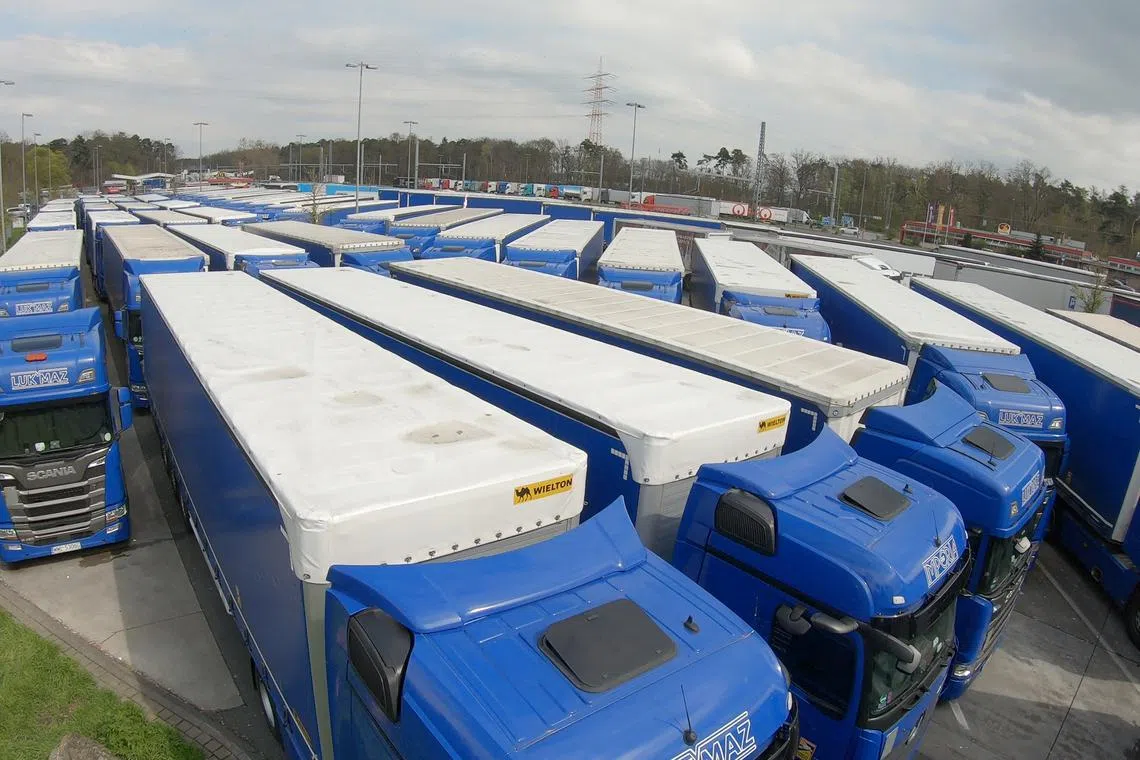EU unveils measures to make freight transport cleaner
Sign up now: Get ST's newsletters delivered to your inbox

The proposed measures will see the first significant changes in around 30 years in the size of trucks operating in the bloc.
PHOTO: REUTERS
Follow topic:
BRUSSELS – The European Commission plans to cut red tape and crack down on greenwashing in the transport of freight in new measures aimed at lowering emissions in a sector which accounts for 30 per cent of the European Union’s carbon dioxide emissions.
The proposed measures announced on Tuesday, which will also see the first significant changes in around 30 years in the size of trucks operating in the bloc, are part of the EU’s efforts to deliver on its Green Deal and net-zero emissions targets.
Despite being a major source of CO2 emissions in the EU,
“This (gap) often leads to a significant discrepancy in results… (and) creates conditions for greenwashing, and can give wrong incentives to users,” the Commission says.
The new EU framework would be mandatory for companies that choose to publish their emissions or share these with their business partners.
The Commission has also proposed amending the size of heavy-duty vehicles – such as trucks and buses – for the first time since the 1990s in order to accommodate the weight of batteries as the European fleet shifts to electric vehicles.
Currently, about 96 per cent of trucks weighing over 3.5 metric tonnes run on diesel.
For instance, a standard 40 metric tonne truck would see an additional 4 metric tonnes added to its maximum weight restriction, while hydrogen-powered trucks would be longer. These shifts are expected to encourage the purchase of zero-emission trucks.
With technology expected to bring about lighter batteries, the extra weight allocation can instead be used to carry more goods.
The legislation also seeks to smooth over cross-border restrictions and mandate the use of built-in road detectors to check for weight infractions in an effort to reduce pollution, infrastructure strain and overall congestion that costs the EU €230 billion (S$339 billion) a year.
Rail freight transport, accounting for over 50 per cent of rail traffic, suffers from similar cross-border regulation inconsistencies and poor traffic management.
The Commission is proposing measures to set up a central coordination mechanism between national infrastructure managers and harmonised penalties for those that book up unnecessary slots.
The managers would also coordinate with the growing number of passenger sleeper trains that will increasingly compete with freight for night-time slots.
The decision complements the Green Deal, the EU’s wider strategy to decarbonise the economy by 2050, and comes a day before a crucial vote in the European Parliament on a draft nature restoration law, another element of the Green Deal.
The biggest political group in the assembly said it would oppose it amid concerns about costs for the ambitious transition. REUTERS, BLOOMBERG

